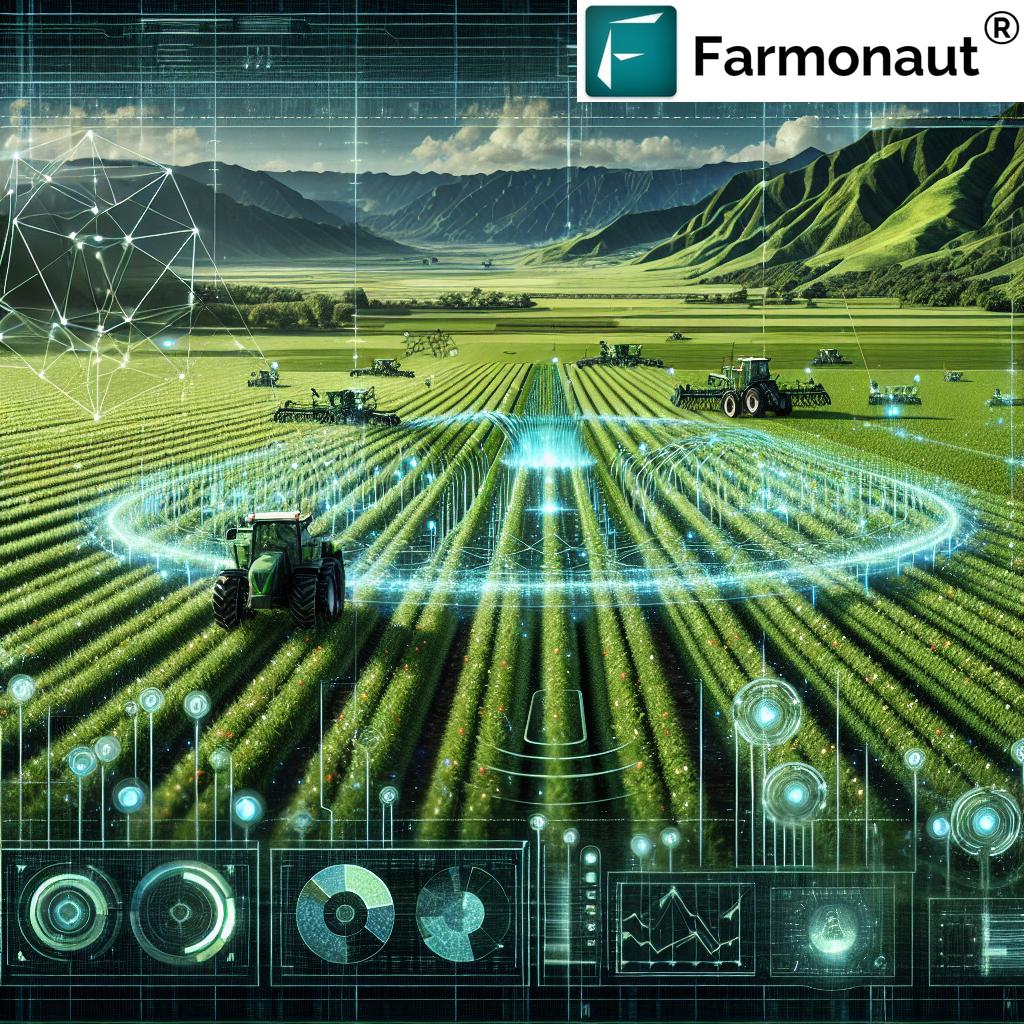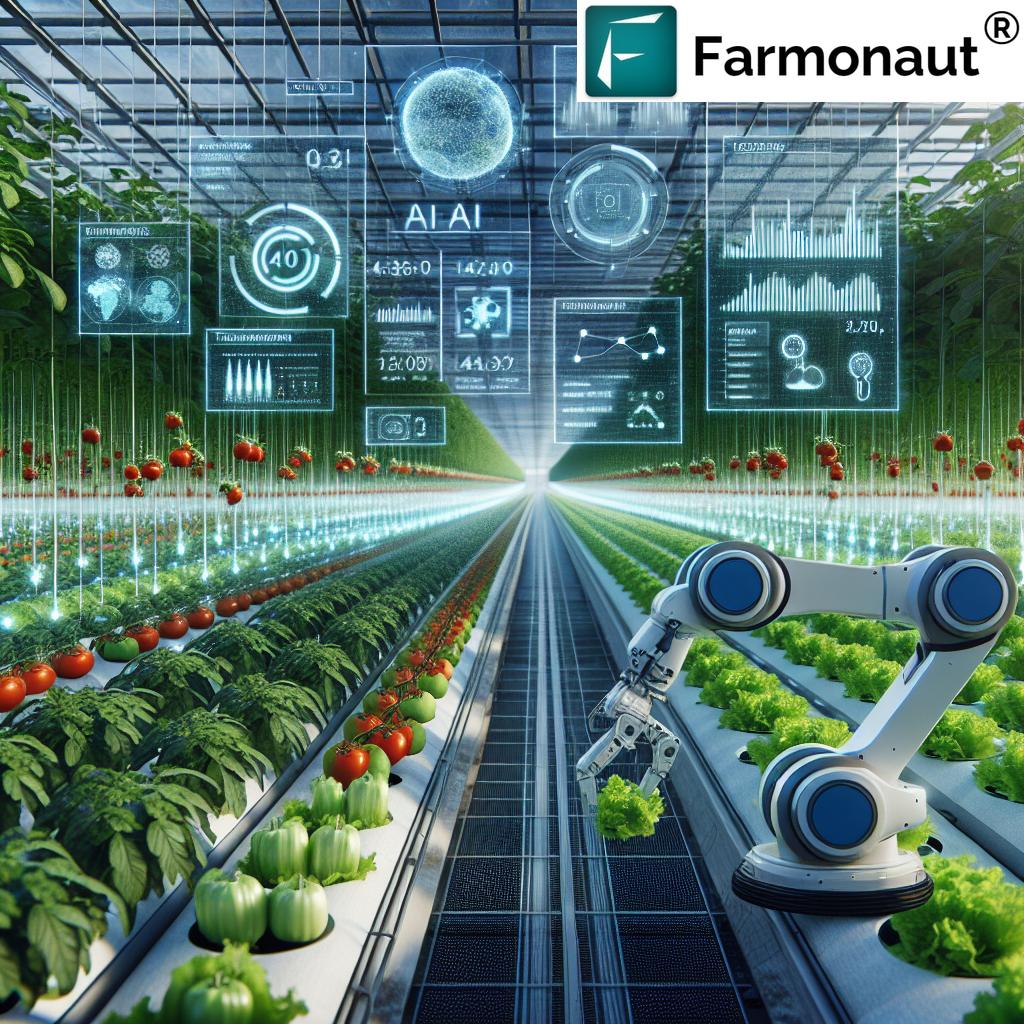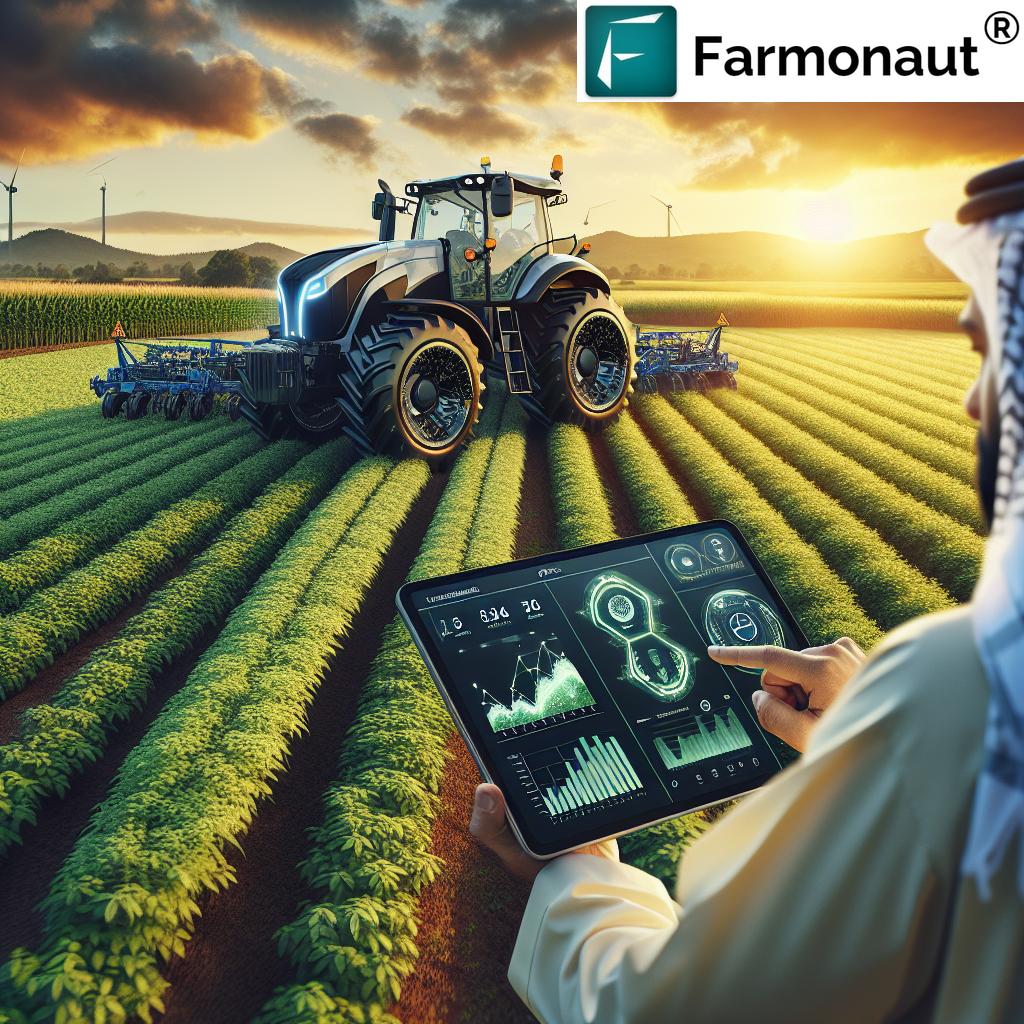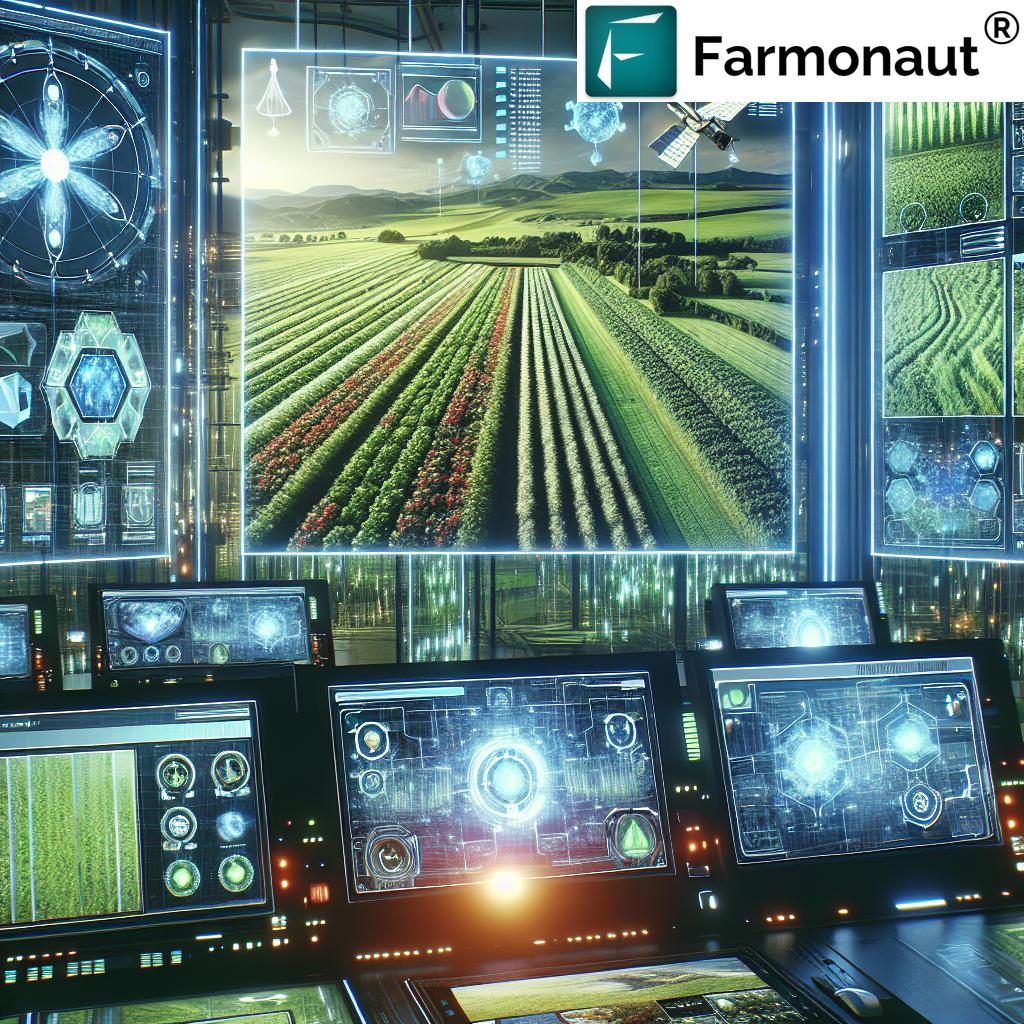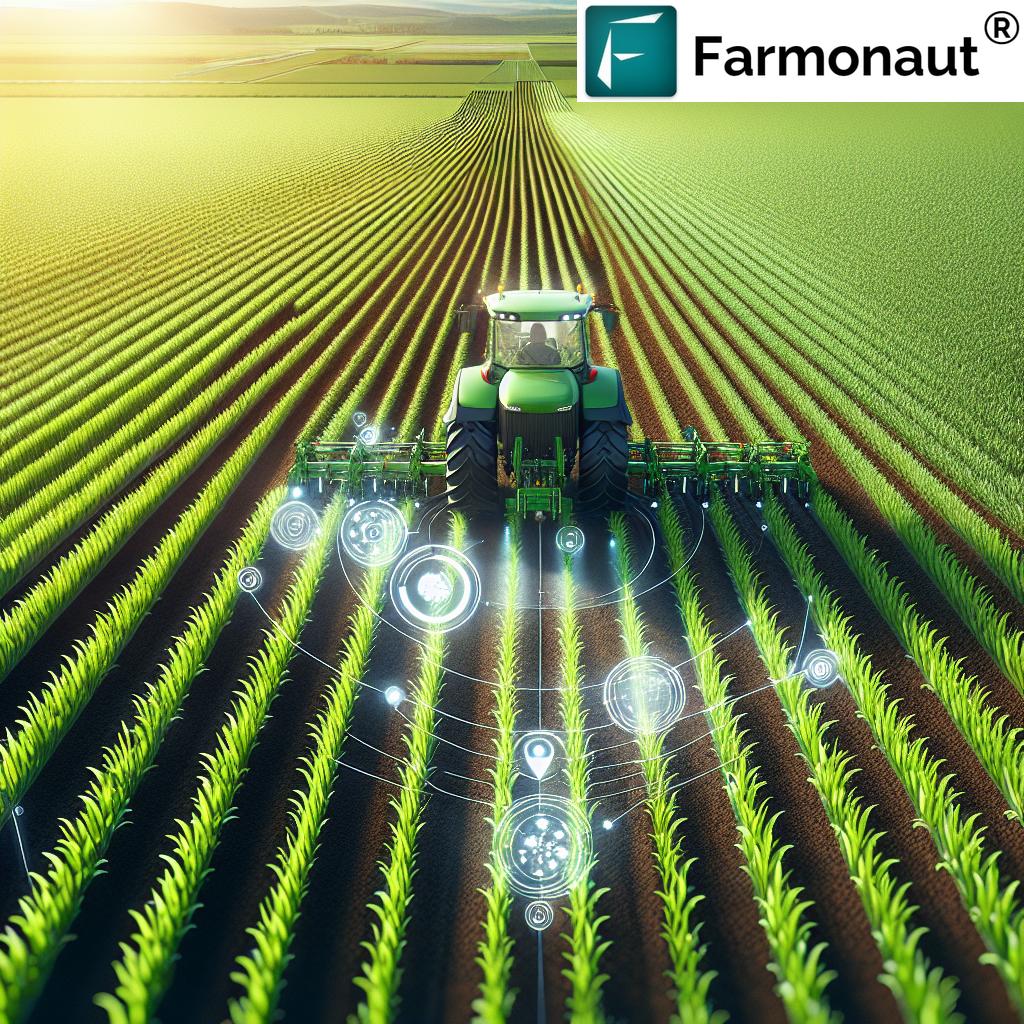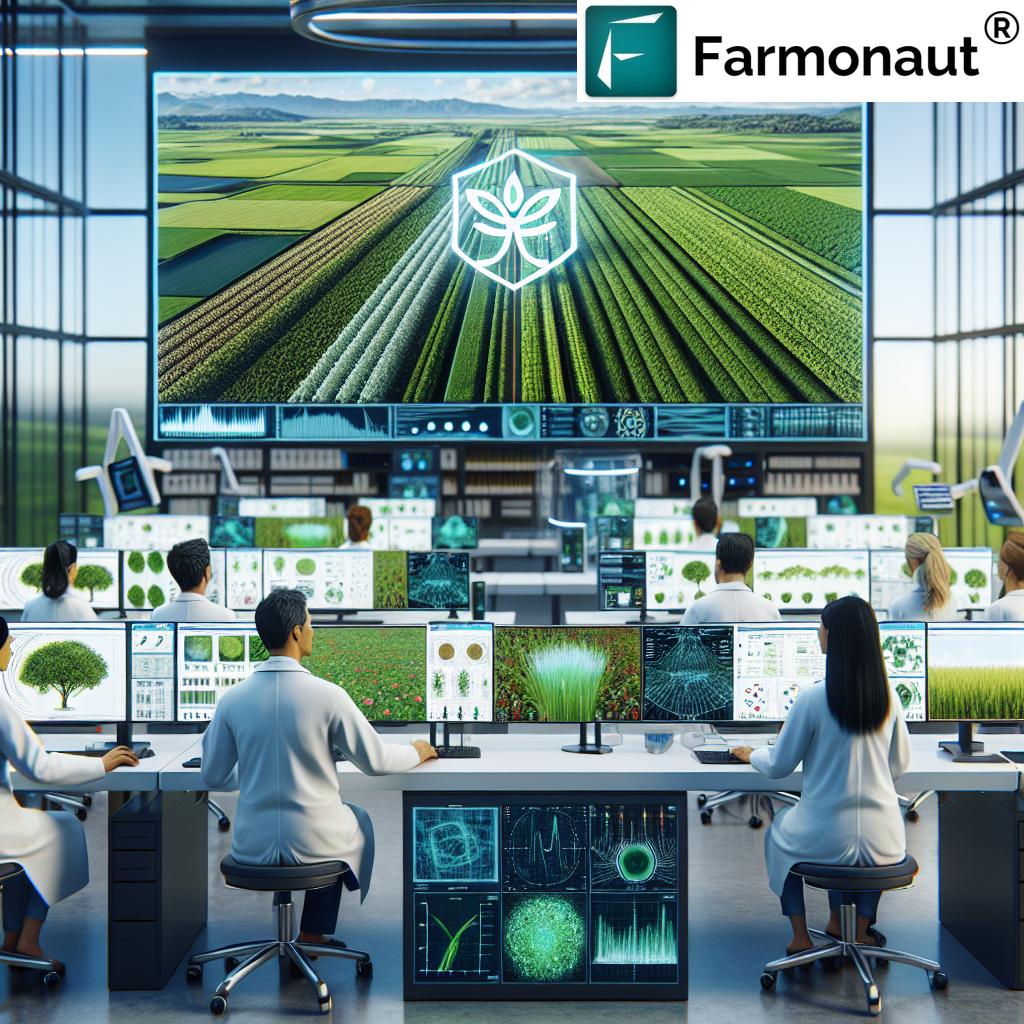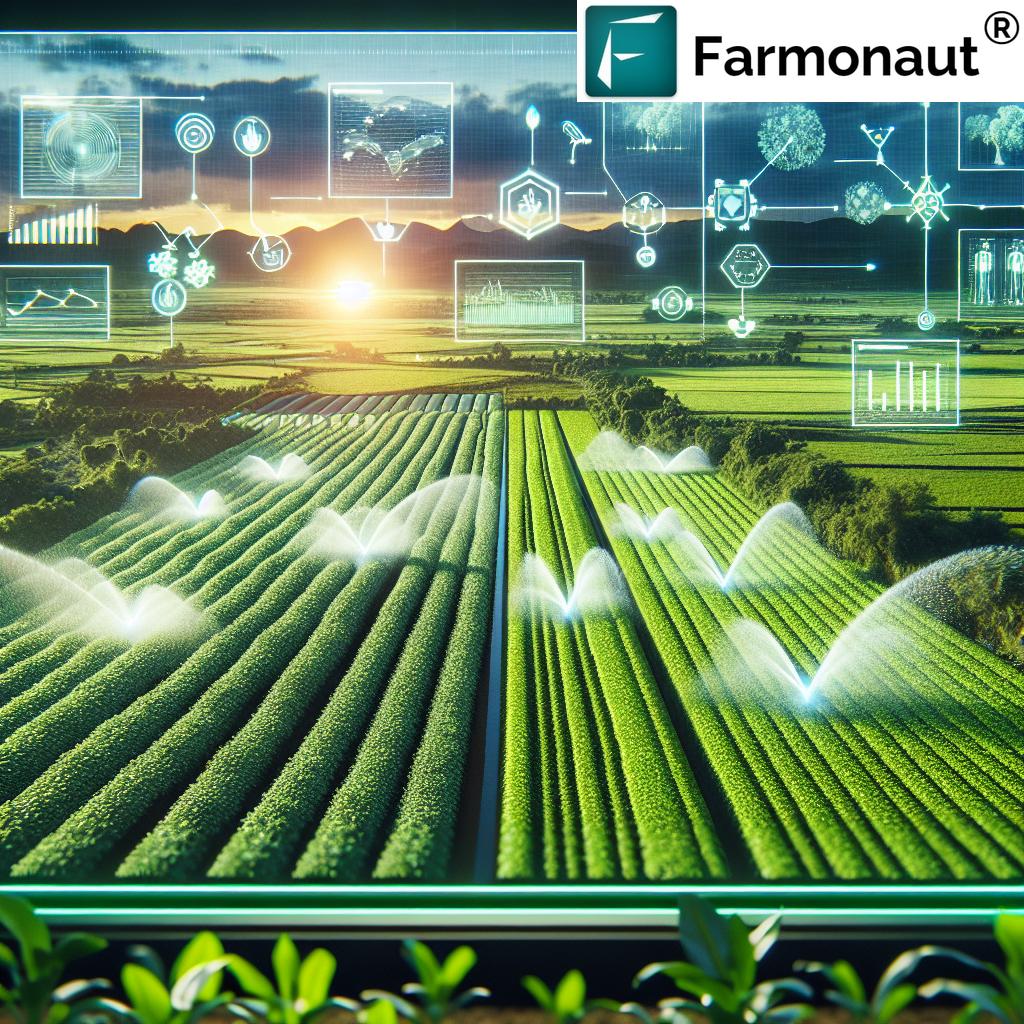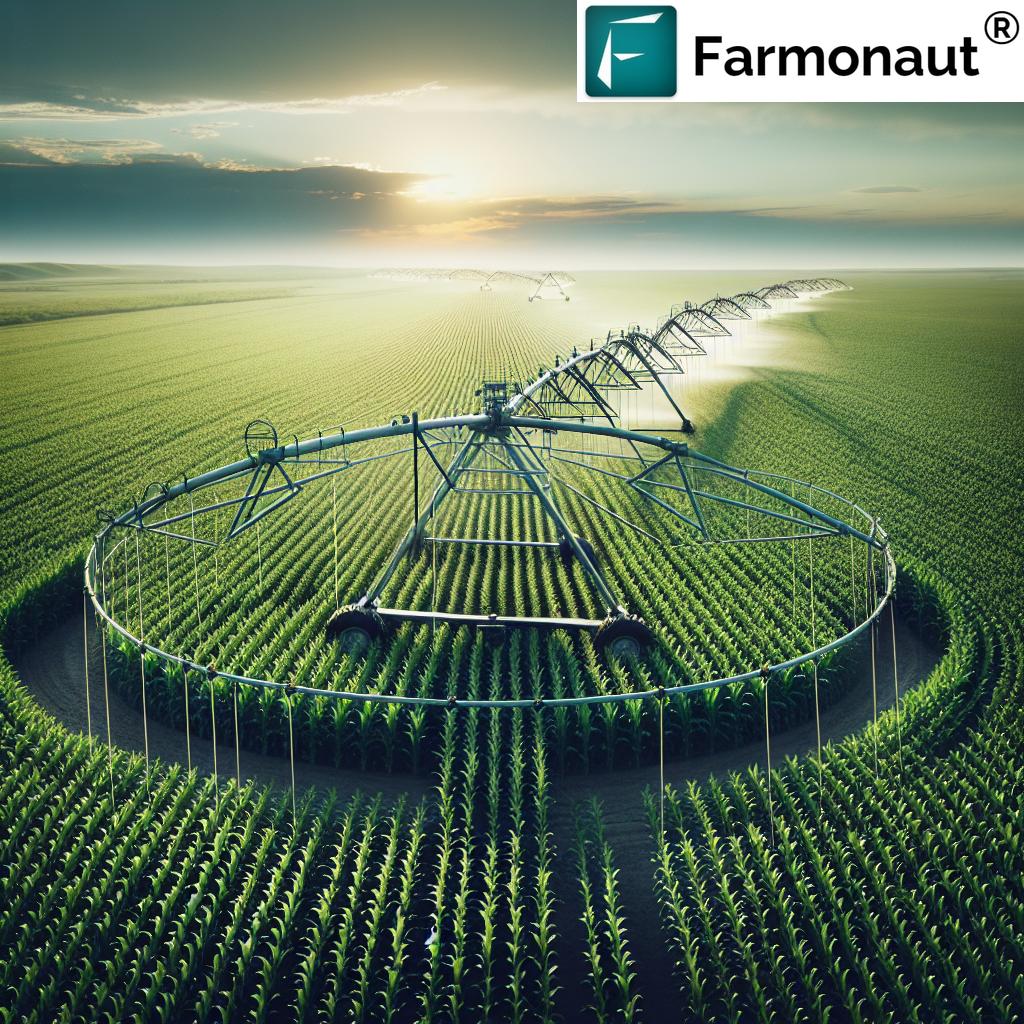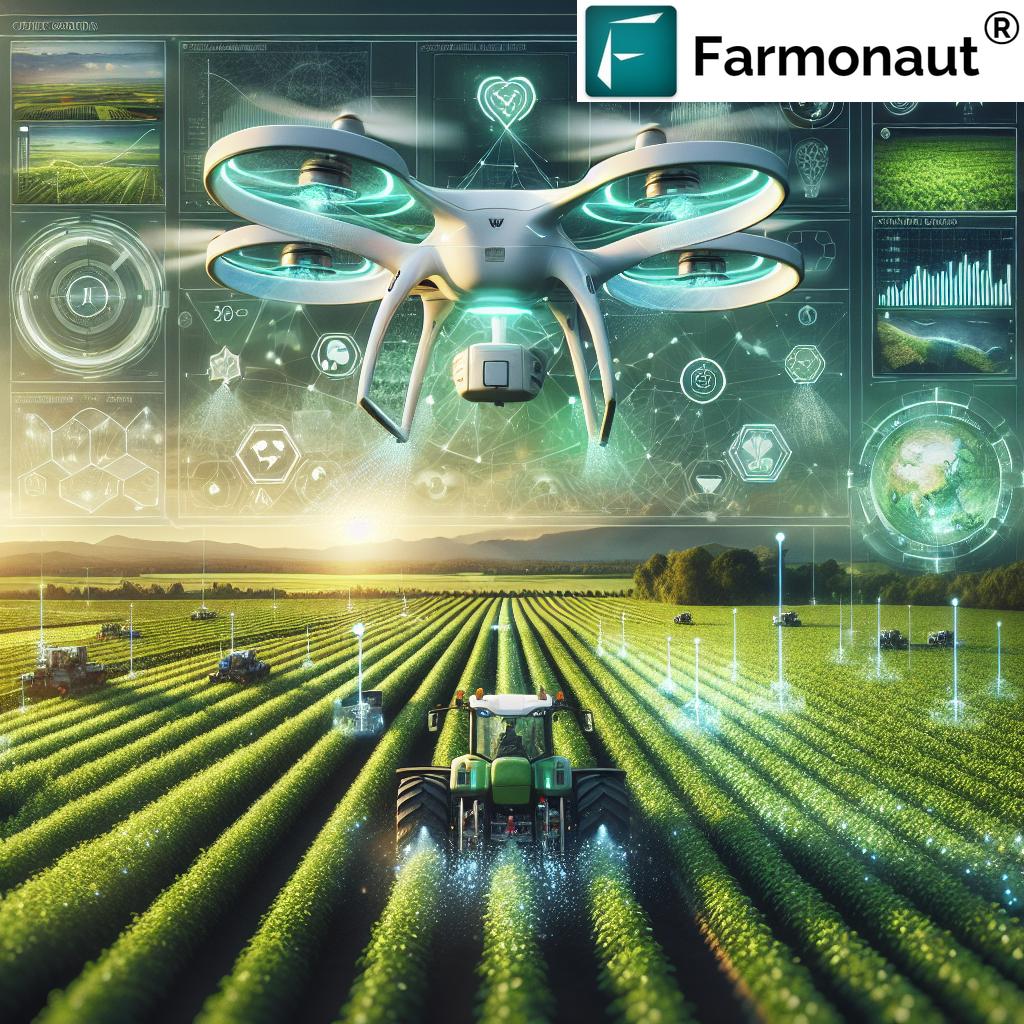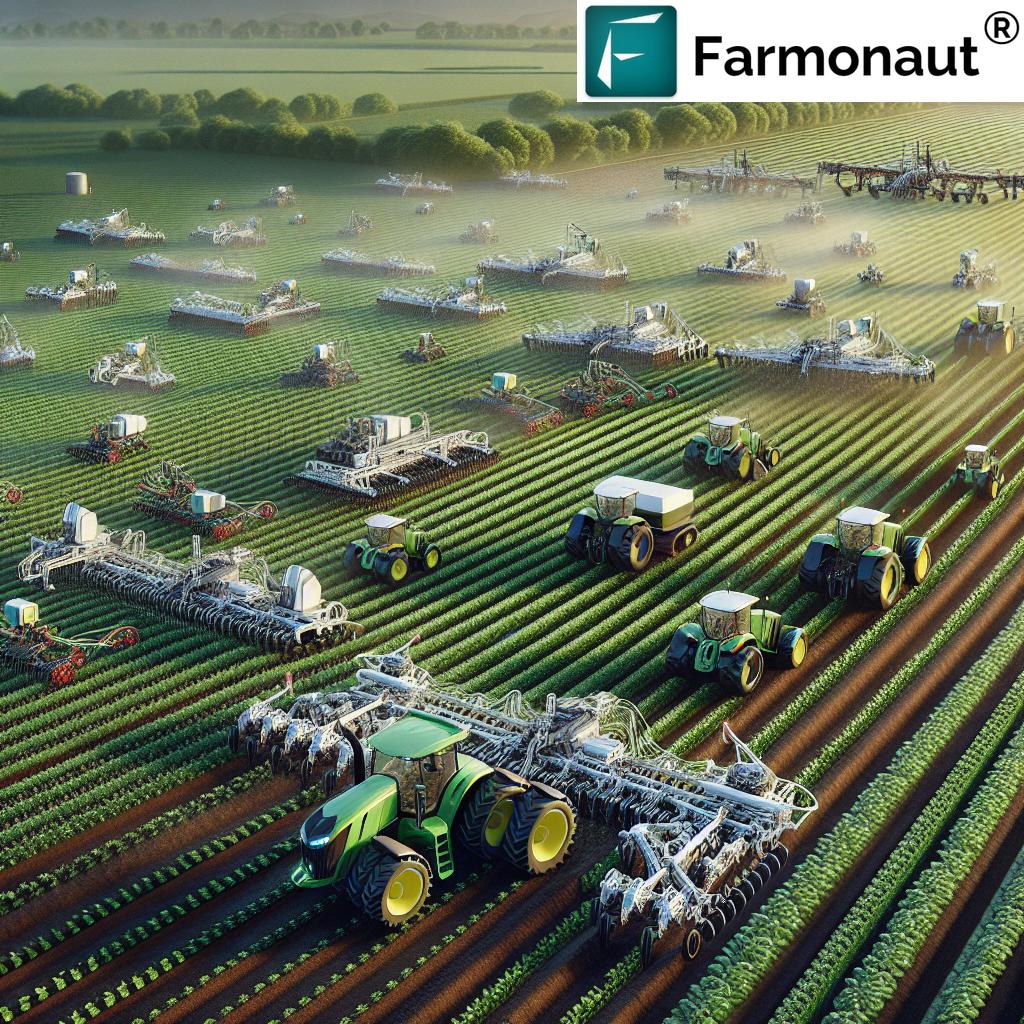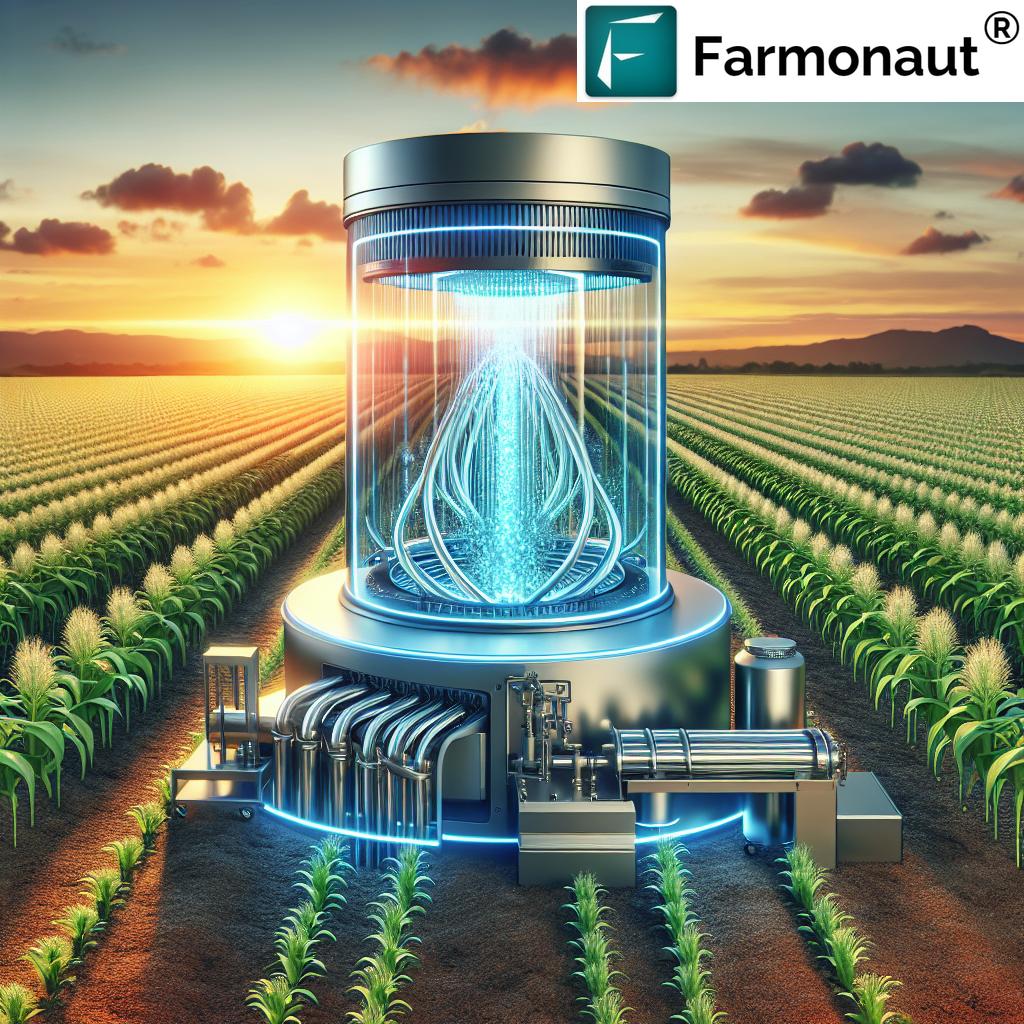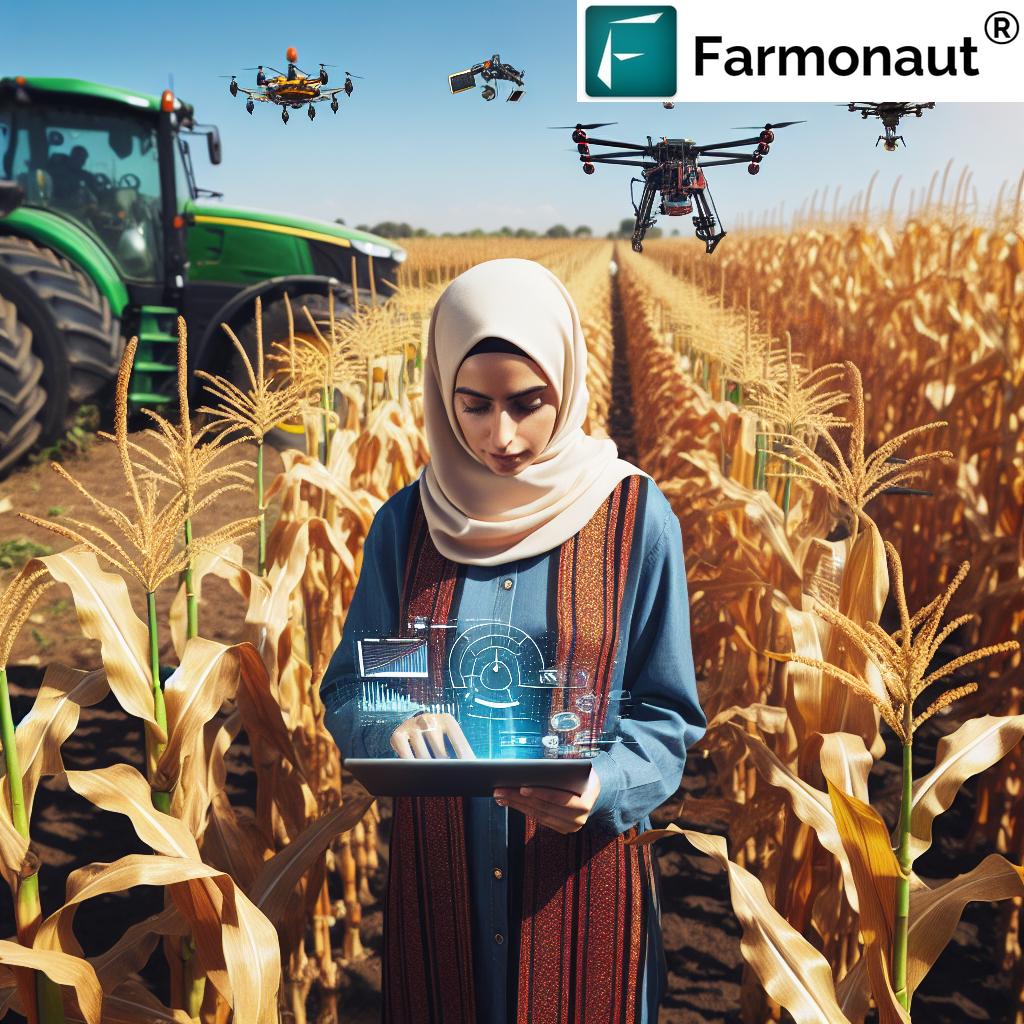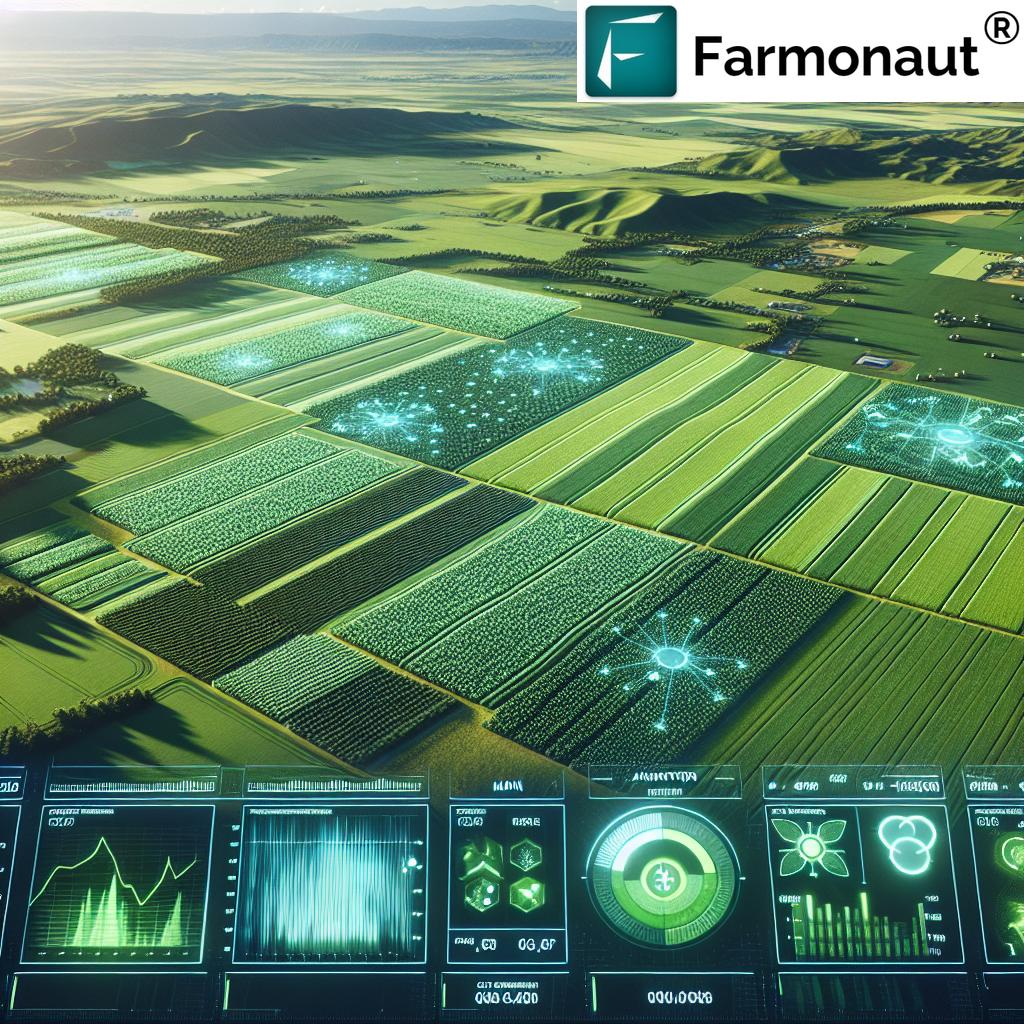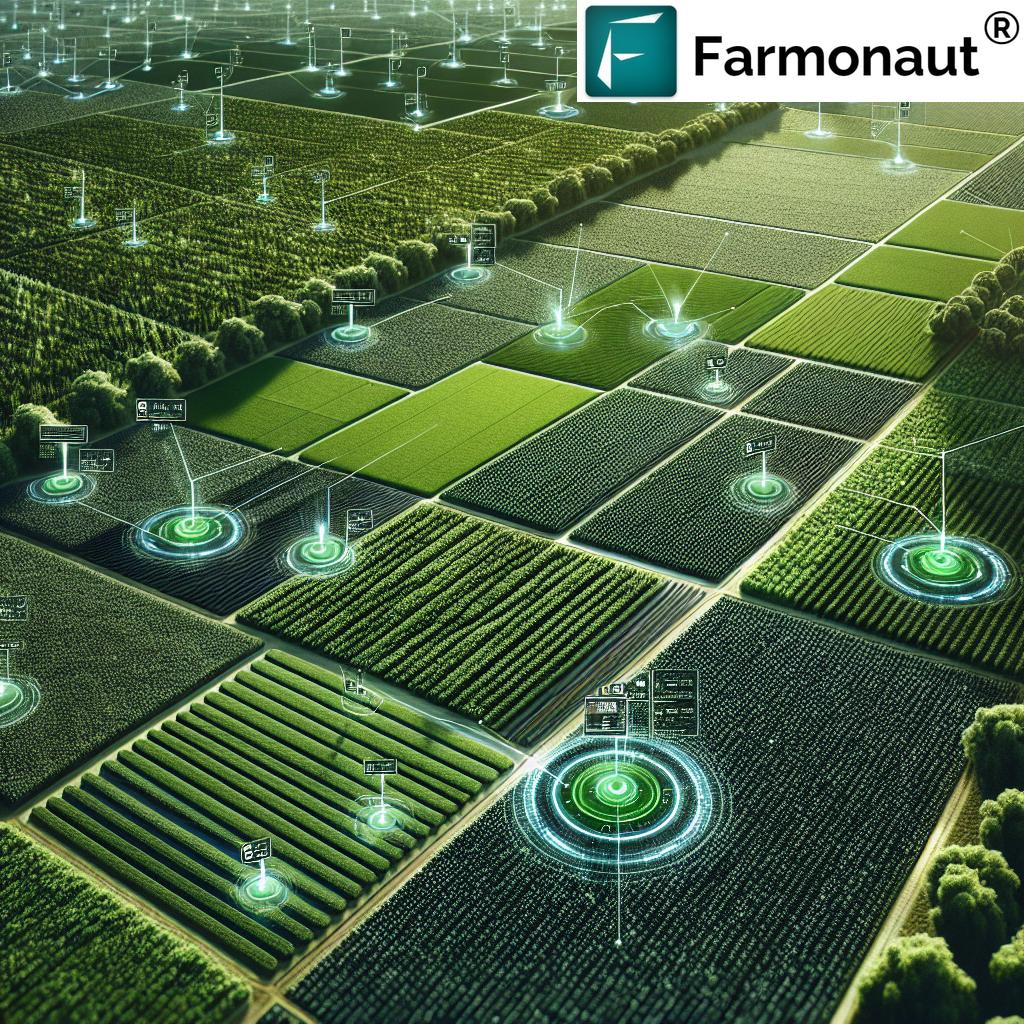Smart Farming Technology: 7 Shocking Agriculture Hacks
“AI-driven smart farming can increase crop yields by up to 30% compared to traditional methods.”
Table of Contents
- Introduction: Technology & Innovation in Modern Agriculture
- Key Components of Smart Farming Technology
- 7 Shocking Agriculture Hacks: Smart Farming in Action
- Comparative Impact Table
- Farmonaut: Advanced Precision Agriculture Solutions
- Applications in Precision Forestry Management
- Boosting Efficiency and Sustainability
- Challenges and Considerations in Smart Farming
- The Future of Smart Farming Technology
- Frequently Asked Questions (FAQ)
Introduction: Technology & Innovation in Modern Agriculture
In recent years, smart farming technology has truly transformed the landscape of agriculture. By integrating advanced tools like Internet of Things (IoT) devices, artificial intelligence (AI), big data analytics, and robotics, we are witnessing a dramatic shift towards greater efficiency, precision, and environmental sustainability in our food systems. Our modern agricultural methods are now more reliant than ever on real-time data collection, machine learning, and the actionable insights these provide.
At the heart of this evolution lies the need to address some of the greatest challenges facing us today—climate change, resource management, food security, and the sustainability of our planet. With smart farming, we can harness technology to optimize resource inputs, minimize waste, and respond proactively to changing environmental conditions, setting the stage for a future-ready agricultural sector.
Why Focus on Smart Farming Technology?
- Boosts crop productivity and resource efficiency
- Improves yield prediction and risk management
- Makes precision agriculture solutions accessible to all sizes of farms
- Supports sustainable farming practices essential for environmental impact reduction
- Empowers farmers with actionable insights and control over their fields
Key Components of Smart Farming Technology
Let’s examine the essential building blocks of smart farming systems that are revolutionizing modern agriculture:
1. Internet of Things (IoT) in Farming
- Sensors and actuators deployed in fields and livestock areas continuously collect real-time data on vital parameters such as soil moisture, temperature, humidity, and crop health.
- These IoT devices enable us to monitor and adapt environmental conditions with precision—ensuring inputs like water and fertilizers are applied exactly where and when they’re most needed.
2. Artificial Intelligence (AI) & Machine Learning (ML): Data-Driven Decisions
- AI algorithms analyze massive datasets from satellite imagery, ground-based sensors, weather forecasts, and other sources to recognize patterns, predict outcomes (such as disease outbreaks or pest infestations), and offer actionable recommendations.
- ML models continue to learn from the data, improving the accuracy of crop yield projections and resource management over time.
3. Robotics & Agricultural Automation
- Autonomous machines—such as planting robots, harvesters, and weeders—execute labor-intensive farming tasks with unmatchable speed and accuracy, lowering manual labor costs while minimizing errors.
- Robotic systems in greenhouses, for example, can control irrigation, humidity, and temperature automatically, contributing to uninterrupted high-quality crop production.
4. Big Data Analytics in Agriculture
- Aggregated data from sensors, drones, satellites, machinery, and even digital marketplaces is processed to reveal trends and optimize everything from field management to supply chain logistics.
- With this analytic approach, farmers can maximize output, adapt to market changes, and respond swiftly to adverse weather or pest threats.
7 Shocking Agriculture Hacks: Smart Farming In Action
Now, let’s dive into the seven most impactful smart farming technology hacks that are propelling agriculture into a new era of precision, efficiency, and sustainability. Each hack harnesses a blend of advanced technologies to boost yields, lower costs, and minimize environmental impact.
-
1. IoT-Enabled Precision Irrigation Systems
We utilize sensors and IoT actuators to continually monitor soil moisture, temperature, and humidity levels across our fields. This real-time data flows directly to our management platforms, enabling automated irrigation that delivers water exactly when and where it’s needed—boosting resource efficiency and reducing waste.
- Keyword synergy: IoT in farming, smart irrigation systems, environmental sustainability, conserving water, automated greenhouse systems
- Example: Deploying IoT-enabled drip irrigation in arid zones
Efficient water management isn’t just about saving resources—it’s fundamental to reliable yields and climate-adaptive agriculture.
-
2. AI-Powered Crop Monitoring with Drones
Drones equipped with multispectral cameras and advanced AI-based image processing allow us to detect early signs of pest infestations, nutrient deficiencies, or disease—often before the human eye can spot them. Crop monitoring with drones not only speeds up detection, but it also enables targeted interventions that slash losses.
- Keyword synergy: AI in agriculture, crop monitoring with drones, detecting pest infestations, disease, yields, big data analytics in agriculture
- Example: Routine UAV flights identify fungal outbreaks faster than manual scouting
-
3. Satellite-Based Crop Health and Resource Management
Using satellites, we can remotely monitor crop health across vast fields at unprecedented scale. Technologies like Farmonaut’s satellite-based crop health monitoring provide vital indices (NDVI, soil moisture, etc.) to assess vegetation vigor and stress. This empowers us to make rapid decisions about irrigation, fertilizer, and pest management, improving yields while reducing chemical and water inputs.
- Keyword synergy: precision agriculture solutions, big data analytics, crop monitoring, detecting disease, optimized resources, satellite technology
- Example: A satellite overpass reveals drought stress days ahead of visible wilting
-
4. AI-Driven Personalized Farm Advisory Systems
Modern AI-based advisory systems—like Farmonaut’s Jeevn AI—leverage satellites, sensors, and weather data to deliver proactive, customized insights for every field. By analyzing historical datasets and forecasting weather, these systems recommend optimal planting times, irrigation schedules, and pest and disease strategies.
- Keyword synergy: AI in agriculture, machine learning, algorithms, analytics, crop yields, supporting proactive management
- Example: The system prompts the best sowing window based on real-time local forecasts and soil data
-
5. Autonomous Robotics for Planting, Weeding, and Harvesting
The rise of robotics in agriculture brings autonomous machines for planting seeds, identifying and removing weeds, and even harvesting fruits with minimal human oversight. These robots can work 24/7, delivering consistent outputs while reducing labor costs and preventing plant damage.
- Keyword synergy: robotics, agricultural automation, minimizing labor costs, tasks, removing weeds, harvesting, perform
- Example: Laser weeding robots distinguish crops from weeds using computer vision and remove only the unwanted plants
-
6. Automated Greenhouse Systems for Year-Round Production
Automated greenhouse systems use IoT, sensors, and even AI to regulate temperature, humidity, CO2 concentration, and light, ensuring crops grow in ideal conditions regardless of the weather outside. This results in predictable, high-quality production and reduces dependency on manual monitoring and input.
- Keyword synergy: automated greenhouse systems, IoT, environmental conditions, sustainable farming, reduced labor, production
- Example: Automated tomatoes greenhouses in the Netherlands have set world standards for low input and high yield per square meter
-
7. Fleet and Resource Management Systems for Agricultural Operations
Smart fleet management optimizes the deployment of farm machinery and equipment across multiple operations. Using telematics, IoT devices, and satellite data, we can track, route, and automate equipment for maximum efficiency, reducing fuel, time, and wear-and-tear costs.
- Keyword synergy: resource management, optimizing costs, IoT devices, big data, efficiency
- Example: Fleet tracking in multi-tractor farms cuts idle time and improves machinery lifespan
Streamline your agricultural fleet and resource management here.
“Precision agriculture technologies reduce fertilizer use by nearly 20%, enhancing sustainability in modern farming systems.”
Comparative Impact Table: How Smart Farming Hacks Transform Agriculture
| Hack/Technology Name | Estimated Efficiency Gain (%) | Main Technology Used | Sustainability Impact | Notable Benefit |
|---|---|---|---|---|
| IoT-Enabled Precision Irrigation Systems | 25–35% | IoT, Sensors, Big Data | High | Reduced water use, increased yield |
| AI-Powered Crop Monitoring with Drones | 15–20% | AI, Drones, ML | Medium | Early pest/disease detection |
| Satellite-Based Crop Health and Resource Management | 20–25% | Satellites, Analytics, IoT | High | Optimized fertilizer & water use |
| AI-Driven Personalized Farm Advisory | 18–28% | AI, ML, Big Data | Medium | Better timing, fewer losses |
| Autonomous Robotics for Field Operations | 30–40% | Robotics, Automation, AI | Medium | Reduced labor cost, minimizes errors |
| Automated Greenhouse Systems | 40–50% | IoT, Sensors, Automation | High | Year-round production, lower inputs |
| Fleet and Resource Management Systems | 10–15% | IoT, Telematics, Analytics | Medium | Reduced operational costs |
Farmonaut: Advanced Precision Agriculture Solutions for Every Farmer
As we look to integrate technology into every aspect of agriculture, platforms like Farmonaut are leading the way by making advanced, data-driven insights available through web and mobile apps for both individual farmers and large-scale agribusinesses. Here’s how Farmonaut supports smart, efficient, and sustainable farming:
- Satellite-Based Crop Health Monitoring: Using multispectral satellite imagery, Farmonaut gives real-time NDVI and soil moisture data—enabling timely irrigation, fertilizer, and pest/disease management. Affordable, accessible, and scalable—this is precision agriculture without huge upfront hardware costs.
- Jeevn AI Farm Advisory: Delivers AI-based recommendations, hyper-local weather forecasts, and dynamic strategies for crop planning, reducing input waste and boosting productivity.
- Blockchain Product Traceability: Tracks each stage of farm produce, guaranteeing supply chain security, transparency, and food authenticity. Explore product traceability here.
- Fleet & Resource Management: Minimize operational costs, optimize machine deployment, and boost farm efficiency at scale. See fleet management solutions here.
- Carbon Footprinting: Measure and reduce your agricultural carbon emissions for compliance, sustainability, and market credibility. Learn about carbon footprinting here.
- APIs for Integration: Seamlessly connect Farmonaut’s satellite and weather data with your own platforms, research tools, or government dashboards. Check our robust API platform and explore the API developer docs.
- Tailored for All Stakeholders: From individual farmers and cooperatives to government bodies and financial institutions, smart farming is made affordable and simple to adopt.
Need to manage large-scale plantations or forestry operations? Farmonaut’s Agro Admin App is your complete solution for plantation, forest, and advisory management.
Want to turn your field insights into verified financing and better insurance? Learn about crop loan and insurance solutions here.
Applications in Precision Forestry Management
The same smart farming technology that’s transforming agriculture is having a large impact in forestry:
- Remote Forest Monitoring: With drones and satellite imagery, we can spot illegal logging, pest outbreaks, and even subtle changes in forest health, all from a distance.
- Precision Forestry Management: GPS and advanced mapping pinpoint tree species, monitor growth, and optimize harvest scheduling to maintain ecosystem balance.
- Robotic Planting & Harvest: Autonomous machines safely plant seedlings and harvest timber while preventing damage to adjacent growth—boosting both efficiency and safety.
Boosting Efficiency and Sustainability in Agriculture
The collective deployment of these smart farming technologies results in:
- Increased Productivity: Timely, data-driven decisions and targeted inputs help maximize yields for both crops and livestock.
- Improved Resource Management: Water and fertilizer conservation is achieved via precise application—directly reducing costs and waste.
- Lower Operational Costs: Robotics and automation lower labor costs, while AI-based forecasts minimize losses due to adverse weather or pests.
- Environmental Sustainability: Sustainable farming practices mean minimized chemical use, conservation of soil and water resources, and climate-smart agriculture.
On the supply chain side, blockchain-driven transparency builds consumer trust and helps businesses prove sustainability credentials—vital in today’s competitive food markets.
Challenges and Considerations in Smart Farming
While the benefits are undeniable, embracing smart farming technology requires us to thoughtfully address several real-world challenges:
- High Initial Investment: Sensors, IoT setups, and infrastructure may create barriers for small-scale farmers. Subscription-based precision solutions (like Farmonaut) lower this barrier.
- Technical Expertise: Adopting advanced technologies demands training in data analysis, management software, and equipment operation.
- Data Security & Privacy: Handling large amounts of farm data brings up security and privacy risks, so robust encryption and access protocols are a must.
- The Digital Divide: Limited internet connectivity and infrastructure in some regions can hamper adoption. Government and organizational support is key to bridging this gap.
The Future of Smart Farming Technology
The pace of agricultural innovation is accelerating. The future will bring:
- More affordable, plug-and-play IoT & AI tools so that even the smallest farms can benefit from smart agriculture.
- Blockchain-enabled supply chains will make traceability standard practice, not just an add-on, improving food security and consumer confidence.
- Genomics in crop and livestock development will enable us to breed for resilience, yield, and nutrition.
- Advanced big data analytics in agriculture will allow real-time, hyper-local advisory, closing the yield gap and making resource use even more efficient.
- Greater policy and institutional support for training, infrastructure, and smart farming adoption across developing and rural populations—creating a more equitable, food-secure world.
With continuing improvement and strong support, we can look forward to a revolutionized, sustainable agricultural sector that feeds our future while caring for our planet.
Frequently Asked Questions (FAQ) on Smart Farming Technology
What is smart farming technology?
Smart farming technology refers to the integration of advanced digital tools (such as IoT devices, AI, big data analytics, drones, and robotics) into agriculture to optimize resource use, boost yields, minimize environmental impacts, and make data-driven decisions.
How does AI in agriculture help with crop management?
AI analyzes vast amounts of data—from satellite images to on-ground sensors—and provides insights to predict disease outbreaks, recommend optimal planting or harvesting times, and ensure precise application of water or fertilizers.
What are the main benefits of IoT in farming?
IoT devices enable continuous monitoring of key field parameters like soil moisture, enabling automated, targeted irrigation and input application, reducing waste and improving yields.
How does Farmonaut make smart farming accessible?
By providing crop health monitoring, weather intelligence, satellite data, AI-based advisory, and blockchain tools via affordable subscriptions and APIs, Farmonaut lowers the adoption barrier and makes precision agriculture accessible for individual farmers, agribusinesses, and many others.
Is smart farming only for large or high-tech farms?
No. Solutions like Farmonaut are specifically designed for scalability and affordability, making them accessible to smallholders, cooperatives, and even government organizations seeking cost-effective, scalable smart farming solutions.
What are the major challenges in smart farming?
Key challenges include high initial investment, skill/training requirements, ensuring data security and privacy, and connectivity/infrastructure limitations in remote regions.
How do automated greenhouse systems work?
Automated greenhouses use sensors and automation to control climate variables—temperature, humidity, lighting—creating optimal growing conditions and enabling consistent year-round production for various crops.
Conclusion: Smart Farming for a Better Tomorrow
The adoption of smart farming technology is not only unlocking new levels of productivity and precision but is also ensuring that agriculture is sustainable, resilient, and capable of feeding a growing world population. By leveraging data-driven insights, automation, and advanced analytics, we create an ecosystem that benefits farmers, businesses, and consumers alike while safeguarding the environment.
Platforms like Farmonaut are leading this charge, making precision agriculture solutions more affordable and accessible than ever before and promoting a more connected, informed, and sustainable future for agriculture across the globe.


